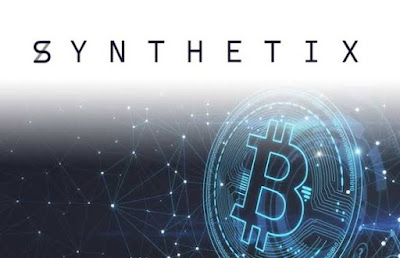What Is Synthetix Network Token (SNX)?
Synthetix is an Ethereum-based protocol for the issuance of synthetic assets. Analogous to derivatives in legacy finance, synthetic assets are financial instruments in the form of ERC-20 smart contracts known as “Synths” that track and provide the returns of another asset without requiring you to hold that asset. You can trade Synths - which range from cryptocurrencies, indexes, inverses, and real-world assets like gold - on Kwenta, Synthetix’s decentralized exchange (DEX). Synthetix’s native token, the Synthetix Network Token (SNX), is used to provide collateral against Synths that are issued.
To understand Synthetix, it is necessary to understand the utility of Synths and their role in the decentralized finance (DeFi) ecosystem.
How Does Synthetix Work?
Synths use decentralized oracles, which are smart contract-based price discovery protocols, to track the prices of the assets represented, allowing you to hold and exchange Synths as if you actually own the underlying assets. In this manner, Synths provide exposure to assets normally inaccessible to the average crypto investor — gold and silver, for example — and lets you trade them quickly and efficiently. Synths are different from tokenized commodities, such as Paxos’ PAX Gold (PAXG), which is backed by gold bars. Owning PAXG means that you own the underlying gold and that Paxos holds it for you, whereas owning Synthetix’s sXAU means that you do not own the underlying asset - you merely have exposure to the price of gold.
Because Synths are issued on Ethereum, you can deposit them on other DeFi platforms such as Curve and Uniswap and use them to provide liquidity and earn interest. Synthetics and derivatives are important for building mature markets (i.e., markets that have reached equilibrium) by facilitating price discovery and helping to hedge against volatility.
For example, if you anticipate that the value of your asset will rise in the future, but are hesitant to accept the risk that would come with the possibility that the asset’s value fails to rise, you can buy an options contract. Options contracts are agreements between two parties that give you, the buyer, the option to buy or sell an asset at a future date at a predetermined price. This way, if the asset’s value fails to rise, you can buy a contract that allows you to sell it at a certain price up to a certain date.
Let’s take a closer look at how Synthetix works. To begin trading Synths, you can use two methods:
- Purchase ETH on an exchange
- Exchange ETH for sUSD on Kwenta
- Then exchange for other Synths, such as sBTC
Alternatively you can:
- Obtain SNX tokens on an exchange
- Stake them on Mintr, a decentralized application (dapp) created by Synthetix
- Create synths and begin trading them on Kwenta
On Synthetix, all Synths created by staking SNX tokens are backed by a 600% collateralization ratio, which is determined through community governance. Stakers must manually manage their ratio on Mintr by minting sUSD if it is too high, and burning sUSD if it is too low.
When you stake SNX and mint sUSD, you take on debt reflecting the amount of sUSD that must be burned to un-stake your SNX. This debt, which also represents a proportion of all the debt on Synthetix, is denominated in sUSD and increases and decreases in accordance with the supply of Synths and their exchange rates. For example, if half of Synthetix’s Synths were synthetic ether (sETH) and the price of ether doubled, the total debt and each staker’s debt would rise by one quarter.
Because the system’s total debt is distributed in this way, the stakers act as a “pooled counterparty” to trades. This means that you do not need counterparties when you exchange Synths, and instead convert them directly through a smart contract. This system mitigates counterparty risks and slippage, and ensures that there is sufficient liquidity for trading.
When you stake your tokens, you are eligible to receive two types of rewards if your collateralization ratio remains at 600%: staking rewards, denominated in SNX, and exchange fees from all Synth trades, denominated in sUSD. Exchange fees are distributed in accordance with the amount of debt each staker has issued. Linking rewards to the collateralization ratio ensures that Synths are always sufficiently backed by collateral. If you want to un-stake your SNX tokens, you must burn sUSD. Because the debt pool fluctuates, you may need to burn more or less sUSD than you initially minted.
Tags:
Cryptocurrency
